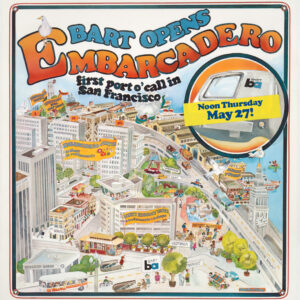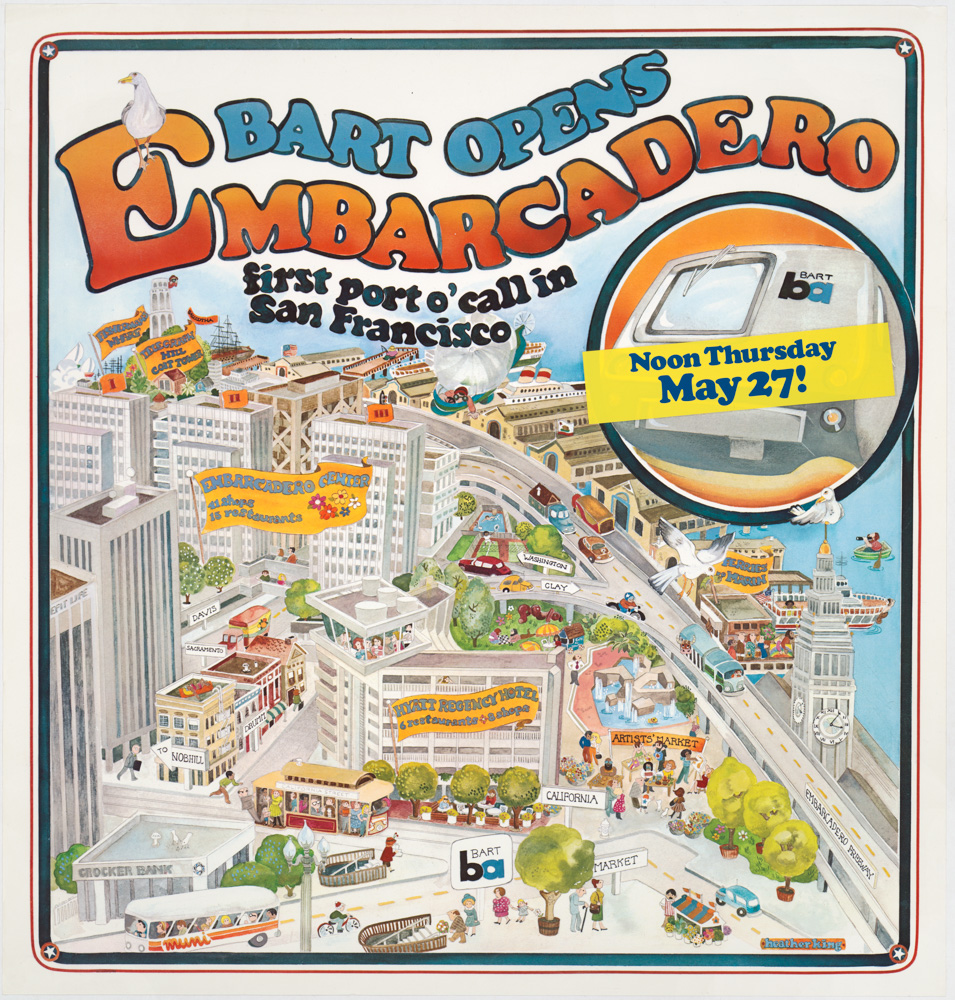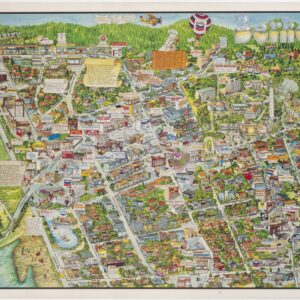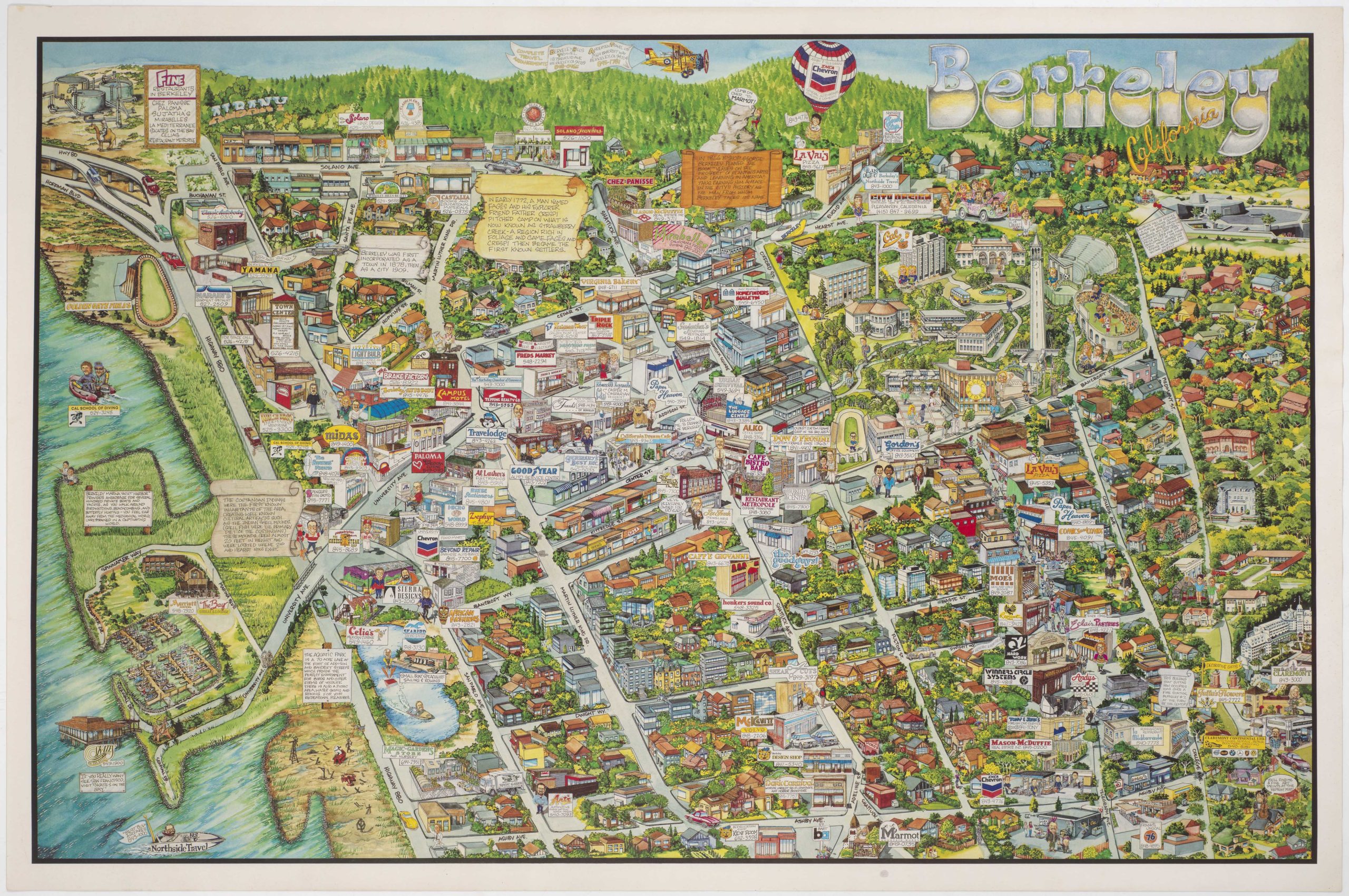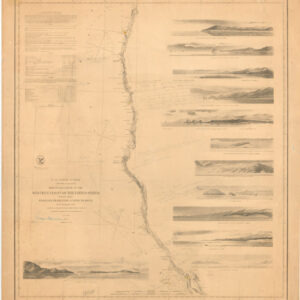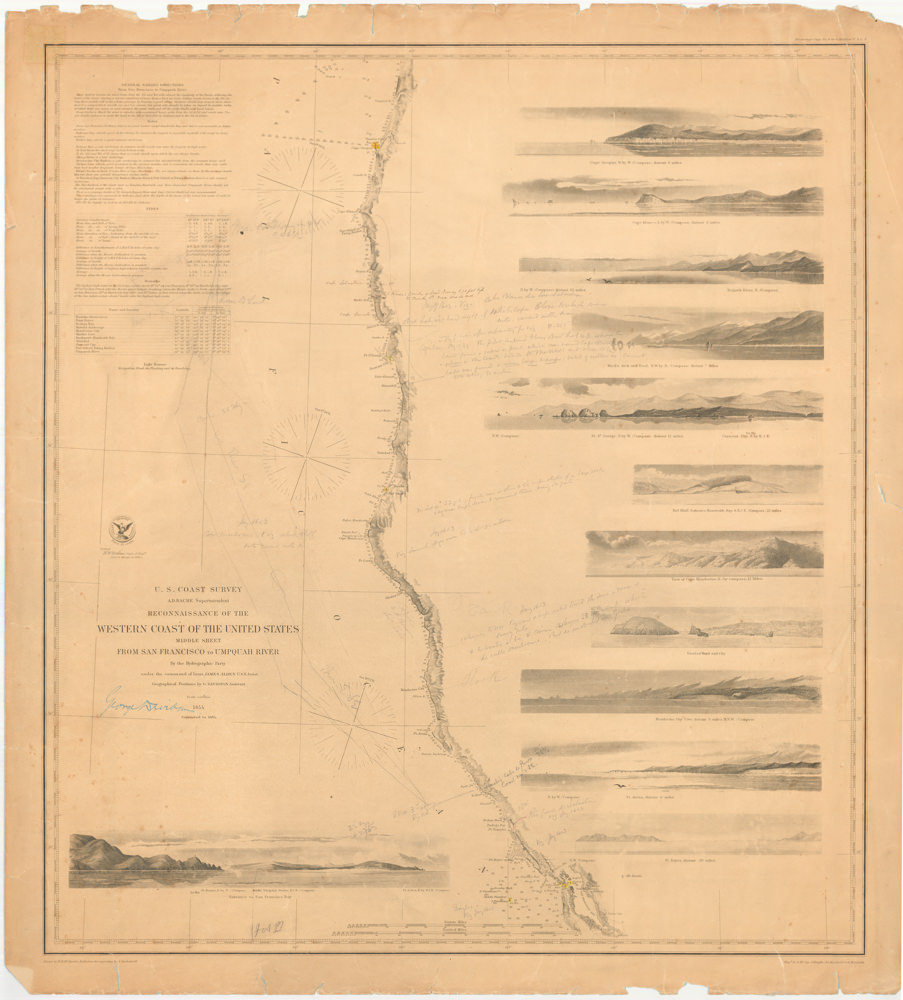Britton & Rey 1882 California guide for German immigrants, with Lake Tahoe as ‘Bigler Lake.’
Californien. Veröffentlicht von der Einwanderungs-gesellschaft von Californien. (“The Immigration Association of California.”) San Francisco. No. 10 California Str. (wrapper title)
$450
1 in stock
Description
This is a reduced and updated version of George H. Goddard’s 1857 map of California, the most accurate map of the state to that date. It was printed in an 1882 folding booklet designed to attract prospective emigrants from Germany to California (Einwanderungs-gesellschaft von Kalifornien).
The state is outlined in orangish-red ink, as are individual counties. Cities, towns (including mining boomtowns and “diggings” in the gold regions), waterways (including Lake Tahoe, here making a rare appearance as “Bigler L.”), mountains, mountain passes, roads, railroads, and other features are labelled throughout. The booklet text briefly describes California and its society, with practical information such as the cost of goods and prevailing wages for unskilled and skilled labor.
German emigrants played a significant, though sometimes under appreciated, role in the early history of California. Their motivation to emigrate to such a distant and different land than their native Germany was the result of powerful push and pull factors occurring simultaneously. At roughly the same moment when Europe was receiving news of the remarkable gold rush beginning in California, many Germans, particularly of a middle-class, professional background, were eager to escape their homeland in the aftermath of the failed revolutions of 1848.
While disastrous for German liberalism and nationalism, the crushing of the revolutions proved to be a boon for the United States, providing the country with many educated and entrepreneurial immigrants. California was no exception, and Germans quickly became a staple of the state’s political and business elite. Sacramento – near the gold fields – and San Francisco were especially popular destinations. Among them was a young Adolph Sutro (1830 – 1898) from Aachen, who later became the main benefactor of the Comstock Lode of silver along the Nevada-California border, a major business owner and philanthropist, and the mayor of San Francisco in the late 19th century.
Census and publication information
The map is Goddard’s reduced map of the state, first published in 1858 and reissued in 1871 with the addition of railroads. This issue, printed by Britton and Rey in San Francisco in 1882, also shows the railroads brought up to date.
This booklet is quite scarce, being listed in the OCLC among the holdings of the Library of Congress, New York Public Library, University of California Berkeley, the Huntington Library, and the Alice Phelan Sullivan Library of the Society of California Pioneers, while the map is independently cataloged by NYPL, UC-Berkeley, the Huntington Library, and the University of Chicago.
A later, c. 1886 edition, was issued by “C.H. Street & Co. Successors to the Immigration Association Of California” and is equally scarce.
Cartographer(s):
Britton & Rey (1852 – 1906) was a lithographic printing firm based in San Francisco and founded by Joseph Britton and Jacques Joseph Rey in 1852. Especially during the second half of the 19th century, Britton and Rey became the leading lithography firm in San Francisco, and probably California. Among their many publications were birds-eye-views of Californian cities, depictions of the exquisite landscapes, stock certificates, and no least maps. While Rey was the primary artist, Britton worked not only as the main lithographer but was essentially also the man running the business. In addition to their own material, the firm reproduced the works of other American artists like Thomas Almond Ayres (1816 – 1858), George Holbrook Baker (1824 – 1906), Charles Christian Nahl (1818 – 1878), and Frederick August Wenderoth (1819 – 1884). Following Rey’s death in 1892 Britton passed the form on to Rey’s son, Valentine J. A. Rey, who ran it until the great earthquake and fire of 1906 destroyed most of the company’s assets.
Joseph Britton (1825 – July 18, 1901) was a lithographer and the co-founder of the prominent San Francisco lithography studio Britton and Rey. He was also a civic leader in San Francisco, serving on the Board of Supervisors and helping to draft a new city charter. In 1852, he became active in lithography and publishing, first under the name ‘Pollard and Britton,’ and then ‘Britton and Rey,’ a printing company founded with his friend and eventual brother-in-law Jacques Joseph Rey. Britton and Rey became the premier lithographic and engraving studio of the Gold Rush era, producing letter sheets, maps, and artistic prints.
Jacques Joseph Rey (1820 – 1892) was a French engraver and lithographer born in the Alsatian town of Bouxwiller. At the age of about 30, he emigrated to America, eventually settling in California. Here, he soon entered into a partnership with local entrepreneur and civic leader Joseph Britton. Three years later, Rey also married Britton’s sister, allowing his business partner and brother-in-law Britton to live in their house with them. Rey and Britton were not only an important part of the San Francisco printing and publishing scene but also owned a plumbing and gas-fitting firm. In the early years, both men would sometimes partner up with others on specific projects, but by the late 1860s, their partnership was more or less exclusive.
Condition Description
Booklet is 15 pages and measures 41 x 33 cm (16 x 13 in). 8vo, with original yellow printed wrappers. A little soiling to wrappers, map with short edge tear; very good or better.
References
OCLC/WorldCat lists only five copies of the booklet.
